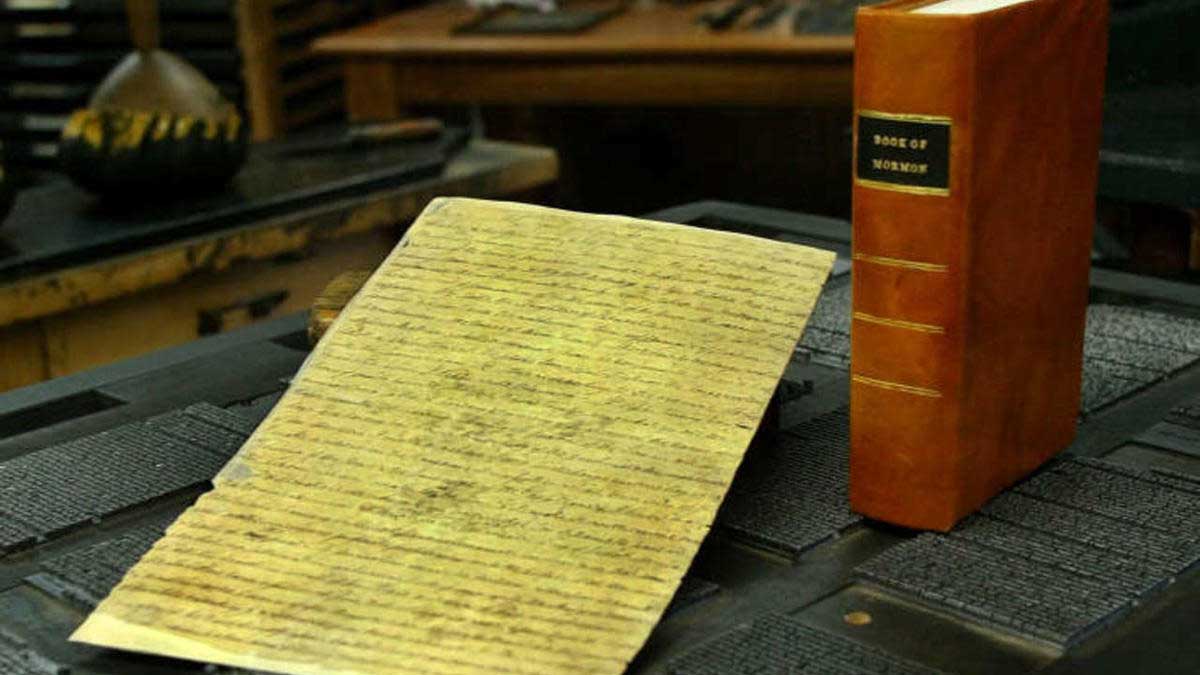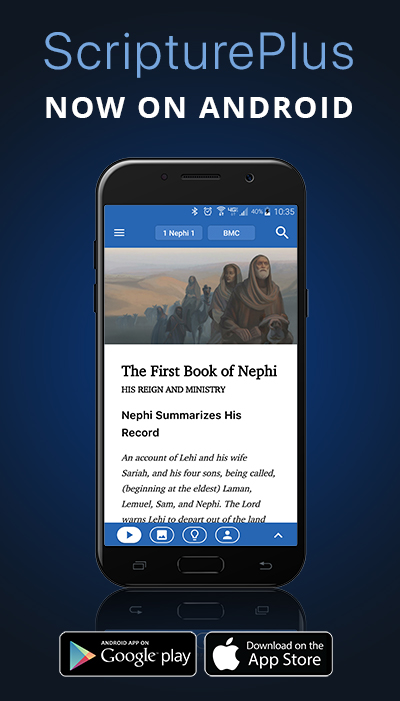/ KnoWhys / KnoWhy #593
Why Was So Much of the Doctrine and Covenants Revealed During the Book of Mormon’s Translation?

Post contributed by BMC Team
January 26, 2021
D&C KnoWhy #593

“A great and marvelous work is about to come forth unto the children of men.”
The Know
During the limited time when the Book of Mormon was being translated in April, May, and June of 1829, at least 13 revelations now canonized in the Doctrine and Covenants were received and recorded by Joseph Smith. Why were all these revelations needed and given during this time? They must have been very important, given how intensely Joseph and Oliver were working on the translation of the plates of Mormon and also on the plates of Nephi.
Some of the reasons for why these revelations were given are:
- Joseph and Oliver and others had questions: these questions involved how the translation of the Book of Mormon was to be performed (Doctrine and Covenants 9), the necessity of priesthood in performing sacred ordinances pertaining to salvation (Doctrine and Covenants 13), the current status and future destiny of the apostle John (Doctrine and Covenants 7), among others.
- They needed instruction: Oliver needed to know how he could implement his gift of translation for the Book of Mormon (Doctrine and Covenants 8). Joseph needed to know how he should handle the loss of the Book of Mormon manuscript pages (Doctrine and Covenants 10).
- They all needed reassurance: The trials that Joseph Smith and his associates underwent to translate the Book of Mormon and prepare to establish the Church were vexing. The revelations encourage patience (Doctrine and Covenants 6:19), charity (Doctrine and Covenants 12:8), confidence in spreading the Gospel (Doctrine and Covenants 11:4–6), being obedient in order to receive blessings (Doctrine and Covenants 6:6, 9), and ultimately trusting in the Lord to be able to bring about his purposes.
The total number of words in these thirteen revelations is 6,124. Assuming that a rate of 20 words per minute—which may be on the fast side—was generally used to dictate and transcribe these individual sections, that computes to a total of 306 minutes, or at least five hours, just to bring forth these revelations, amounting to at least one more full day’s-worth of direct work spread over the translation period. This estimate does not include time for stopping the translation process, discussing the questions and situations with the recipients, pondering the situation, praying, getting people together, seeking, receiving, recording, and delivering the revelation to the recipient. There also would have likely been discussion about what the revelation just given might mean, before getting back to work on the translation. People usually do not think of this series of interruptions, simultaneously running during the days between April 7 and June 30, 1829, in connection with estimating and evaluating the total amount of elapsed time that was required to bring forth the Book of Mormon.
Taken all together, it would appear that not many more than the equivalent of about 60 actual working days would have been available from April to June 1829. This is remarkable because the amount of translation and transcription work accomplished before April 7, 1829 was probably relatively little. Apparently, Joseph had learned to translate more efficiently as he went along with the translation project, and Oliver was likely more skillful as a scribe than Martin Harris or others who were available prior April 7, 1829. The work most likely went faster in April, May, and June 1829 than it had gone in 1828—all of which helps to explain the feasibility of the rapidity of the miraculous translation of the Book of Mormon during the days spent translating during those three months.
The Why
Several lessons can be learned from this information. First, Joseph took scarce time to write these revelations down. Recording spiritual promptings and journaling about blessings we receive should be prioritized, even when time is short.
Second, with the loss of the Book of Mormon manuscript pages, Joseph likely learned the importance of good stewardship over the instructions he received from the Lord via revelation. Like patriarchal blessings received by worthy Church members today, these revelations that Joseph received were important. They were meant not just to be heard once, but to be retained, remembered, reread and personally used as the Lord intends. Doctrine and Covenants 104:59 tells us that such revelations are to be used “[f]or the purpose of building up [the Lord’s] church and kingdom on the earth, and to prepare [his] people for the time when [he] shall dwell with them, which is nigh at hand.”
Third, in later revelations in the Doctrine and Covenants given to Joseph Smith (as well as Joseph Smith’s translation of Matthew), the Lord tells us, by way of “commandment that what I say unto one I say unto all” (Doctrine and Covenants 61:18; 82:5; 92:1; 93:49; JS–Matthew 1:37). Thus, instructions that God gave to the people who first heard these first revelations in the spring of 1829 can help readers understand God’s nature. He would likely respond to similar challenges that we face today as individuals.
To help readers today to extract from these revelations guidance today from the Lord, below is a chart, stating the number of words in each of these 13 revelations and summarizing the main point and some of the lessons that all can learn from each of these brief but precious revelation.
Thirteen Revelations Given during the Time the Book of Mormon Was Being Translated
| Section | # of Words | Summary |
|---|---|---|
| 6 | 1124 | Given to Joseph Smith and Oliver Cowdery in Harmony, about working together in patience, faith, charity, and so forth. |
| 7 | 252 | Discussion of John the Apostle not tasting death. |
| 8 | 389 | Given to Oliver Cowdery about his gift to receive knowledge as Aaron. |
| 9 | 397 | Given to Oliver Cowdery telling him that translation is not his gift and study out the translation in his mind and ask the Lord if it is right before writing it down. |
| 10:38-70 | 937 | Given to Joseph Smith in Fayette, New York instructing him on where to begin translating the small plates of Nephi down to King Benjamin’s discourse in Mosiah. |
| 11 | 789 | Given to Hyrum Smith at Harmony, Pennsylvania. The Lord expresses appreciation for Hyrum’s honest heart, gifts of power, and instructs him in assisting in missionary work and how to preach when called. |
| 12 | 232 | Given to Joseph Knight. The Lord assures us that anyone can assist in bringing forth his work and missionary message to the world. |
| 13 | 66 | The words of John the Baptist on May 15, 1829, in Harmony, Pennsylvania when Oliver and Joseph received the Aaronic Priesthood. |
| 14 | 302 | Given to David Whitmer in Fayette, calling him to assist in missionary work. David is promised eternal life. |
| 15 | 139 | Given to John Whitmer, commending him for desiring to know what would be of most worth to him. The Lord tells him that this is to declare repentance. |
| 16 | 140 | Given to Peter Whitmer, commending him for desiring to know what would be of most worth to him. The Lord tells him that this is to declare repentance and bring souls to Christ. |
| 17 | 311 | Given to the Three Witnesses before viewing the plates, charging them with their duties as witnesses and giving them promises of blessings. |
| 18 | 1,126 | Given to Oliver Cowdery and David Whitmer as converts in Fayette were contemplating the organization of the Church now that the translation of the Book of Mormon was nearly finished. |
| Total | 6,124 words |
Further Reading
John W. Welch, “Timing the Translation of the Book of Mormon: Days [and Hours] Never to Be Forgotten,” BYU Studies Quarterly 57, no. 4: 11–50.
Steven C. Harper, Making Sense of the Doctrine & Covenants: A Guided Tour through Modern Revelations (Salt Lake City: Deseret Book Company, 2008), 36–67.

